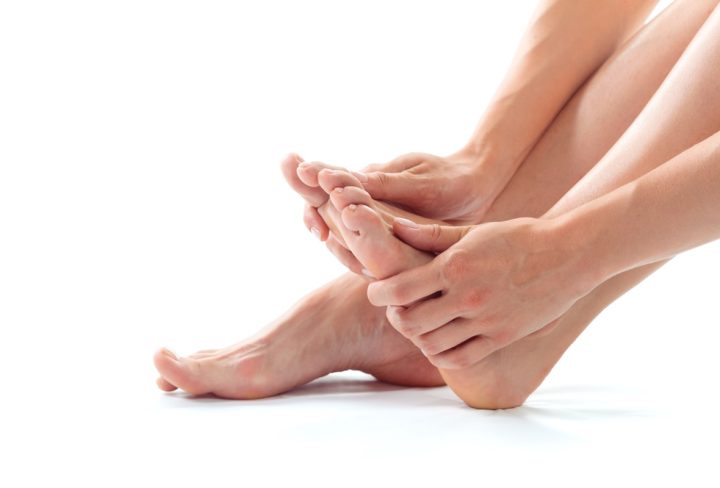Diabetic foot is a common complication of diabetes that occurs when diabetes leads to nerve damage and poor circulation in the feet.
Diabetic foot can cause pain, a loss of sensation, and difficulty in walking.
It may also lead to ulcers and infections, which can ultimately lead to amputation.
Symptoms of Diabetic Foot
• Pain, numbness, or tingling in the feet
• Swelling of the feet and ankles
• Redness, sores, or blisters on the feet
• Dry, cracked skin on the feet
• Infections of the skin or toenails
• Slow healing of cuts or sores on the feet
• Corns, calluses, or bunions
• Changes in the shape of the feet
• Loss of sensation in the feet
Causes of Diabetic Foot
1. Damage to nerves: High blood sugar can cause damage to the nerves in the feet and legs, leading to diabetic neuropathy. This can cause numbness, tingling, and pain in the feet.
2. Poor blood circulation: High blood sugar can damage the blood vessels, leading to poor circulation in the feet. This can make it difficult for wounds to heal and can increase the risk of infection.
3. Poorly fitting shoes: Wearing shoes that are too tight or too loose can cause the feet to rub, leading to the development of sores.
4. Infection: Poorly controlled blood sugar can weaken the immune system, making it more difficult to fight off infections. This can increase the risk of developing an infection in the feet.
5. Deformities: Diabetes can cause changes to the shape of the feet, such as bunions or hammertoes. These deformities can increase the risk of developing sores or ulcers.
Risk factors of Diabetic Foot
1. Poorly controlled diabetes: Poorly controlled diabetes increases the risk of developing a diabetic foot ulcer.
2. Tobacco use: Smoking is a significant risk factor for developing diabetic foot ulcers, as it impairs wound healing.
3. Peripheral neuropathy: This is a common complication of diabetes and it affects the nerves in the feet, leading to a diminished sense of pain, temperature, and touch. This can make it hard to detect an injury and increases the risk of ulceration.
4. Peripheral arterial disease: This is a narrowing of the blood vessels in the legs, which decreases the amount of blood flow to the feet. This can reduce the healing process and increase the risk of ulceration.
5. Poor foot care: Poor foot care is a major risk factor for developing diabetic foot ulcers. This includes not wearing appropriate shoes, not trimming the nails properly, or not checking the feet regularly for any injuries.
Diagnosis of Diabetic Foot
Diabetic foot is diagnosed through a physical examination, including looking for signs of infection, nerve damage, and poor circulation.
A doctor may also order laboratory tests such as a complete blood count, a chemistry panel, and a test for glycosylated hemoglobin to look for diabetes.
Other tests, such as imaging tests (X-ray, MRI, or CT scan) and a nerve conduction study may also be used to diagnose diabetic foot.
Treatment of Diabetic foot
The treatment of diabetic foot depends on the severity of the condition. The primary goals of treatment are to prevent or reduce the risk of complications, relieve pain, and restore function.
General treatment options include:
• Self-care: Self-care is the first line of treatment for most non-severe cases of diabetic foot. This includes proper management of diabetes, regular foot care, wearing shoes that fit properly, and avoiding walking barefoot.
• Medications: Medications may be prescribed to reduce pain, swelling, and infection.
• Surgery: Surgery may be necessary to remove dead tissue or repair damaged tissue.
• Physical therapy: Physical therapy may be used to help restore strength and range of motion in the affected foot or ankle.
• Off-loading: Off-loading can help relieve pain and reduce the risk of ulceration. This involves using a specialized shoe or an orthotic device to reduce pressure on the affected foot.
• Wound care: Wound care is essential for healing foot ulcers and preventing infection. This may include keeping the wound clean and dry, applying a topical antibiotic, and bandaging the wound.
• Amputation: In severe cases, amputation of the affected foot may be necessary.
Diabetic Foot Ulcers: Surgery Options
If you are struggling with a diabetic foot ulcer despite conservative treatment or if you are concerned about your risk of recurrence – surgery might be a good option for you.
- Plastic surgery (skin grafts for persistent or nonhealing ulcers)
- Podiatric surgery (to correct foot deformities, such as high arches or flat feet)
- Vascular surgery (to reduce the risk of developing new or recurring ulcers)
Preventive Tips for Diabetic Foot
1. Check your feet every day for cuts, sores, blisters, redness, swelling, and areas of increased warmth.
2. Wear clean, dry socks and shoes that fit properly and don’t rub or cause blisters.
3. Wash your feet every day with warm (not hot) water and mild soap.
4. Keep your toenails trimmed.
5. Wear diabetic shoes that are specifically designed to fit your feet.
6. Avoid walking barefoot, even at home.
7. Avoid soaking your feet.
8. Avoid extreme temperatures on your feet.
9. Don’t apply lotions or oils between your toes.
10. Exercise regularly to keep your blood sugar under control.


